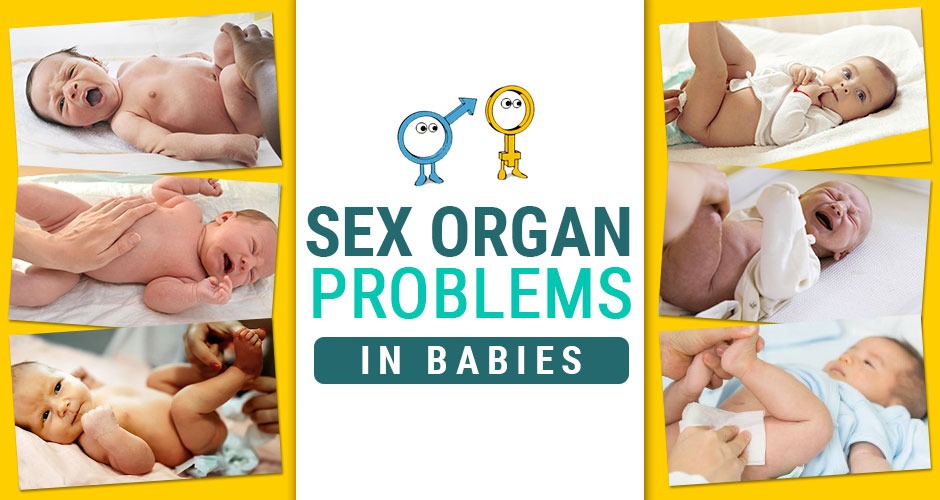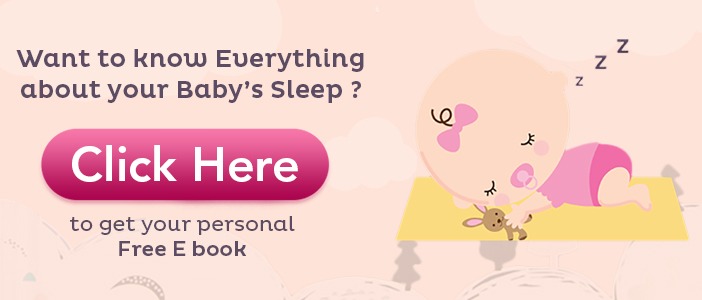
9 common SEX ORGAN problems in babies which you must know
Caring for baby’s private parts is one thing, but having to deal with infections down there is a completely different ball game. Your baby’s misery coupled with the inability to understand what’s wrong confounds most new parents. Here we guide you through the most common genital problems in babies.
Genital problems affecting boys
#1. Undescended Testicles:
This is a fairly commonly occurring problem in baby boys. A male baby’s testicles are formed in his abdomen and only descend into the scrotum shortly before birth. Sometimes in about 5% of cases, one or both of the testicles do not descend to the scrotum prior to birth. This condition is called undescended testicles and is easily detected after birth. Sometimes, a baby boy’s testicles might retract (tuck up) back in his body under certain circumstances, such as when he is cold. This condition, retractable testicles is not a problem if the testicles descend back and remain in the scrotum most of the time. Treatment: Generally, no treatment is necessary as the testes will descend into the scrotum anywhere up to six months after birth. If this fails to happen, it can be corrected surgically anywhere between the ages of 6 months to 2 years to avoid fertility-related issues in adulthood.
#2. Inguinal Hernia:
At birth, a male child’s testicles descend from the abdomen to the scrotum through a passage called the inguinal canal. Sometimes, this canal remains large and a portion of the intestine may poke through this canal. This condition is called inguinal hernia which affects about 5% of all baby boys and is more common in boys than girls. Symptoms include a visible bulge in the baby’s groin or scrotum which looks hard or appears swollen. The baby can also have a fever, vomit, cry a lot and have a poor appetite. Treatment: Unlike other hernias, inguinal hernia does not heal on its own. If the hernia becomes hard and swollen the doctor will recommend a surgery.#3. Balanitis:
This is a common infection affecting baby boys. Balanitis is an infection or inflammation of the tip of the baby’s penis. The symptoms include redness, swelling, strange odour or pain. It could be faced by both circumcised and uncircumcised babies. The common causes are nappy rash or improper cleaning of the genital area. Treatment: Clean the penis with warm water and use an ointment as advised by your paediatrician. Balanitis is usually cured by this treatment. However, If the problem persists, your doctor might recommend circumcision to be performed.#4. Hydrocaulus testicles:
This condition is characterised by the accumulation of fluid in the testicle sac. When this occurs in newborns, it usually means that the membrane surrounding the testicle did not close properly before birth. The symptoms include a visibly swollen scrotum which could also be and red, and sometimes it is painful. Treatment: Doctors will suggest waiting until the age of 1 to wait for the fluid in the testicle sac to drain away. In case this fails to happen, a minor surgery is performed to drain the fluid and close the open passage. Also Read: How to identify allergies in children#5. Hypospadias:
In boys with hypospadias, the opening of the urethra is not in the correct place. The penis might also be bent or curved. This is a common and relatively mild condition and due to this boys might need to sit when urinating. However, sometimes the curvature of the penis caused by this condition can make intercourse difficult later in life. This condition is usually diagnosed shortly after birth. Treatment: There is no natural cure for Hypospadias. It can be corrected with surgery within the first two years of life.Genital problems affecting girls:
#6. Vaginal Thrush:
This is a fungal infection caused by an overgrowth of candida. Candida is found naturally on the skin and in the gut but sometimes it can be transferred from the breastfeeding mother’s nipple to the child’s mouth causing infection. pH imbalance may also cause vaginal thrush. Symptoms include swelling, redness, itchiness and vaginal discharge. White or yellowish thrush patches may also be visible in your baby’s mouth. Treatment: the doctor may prescribe an anti-fungal skin cream or spray. To prevent vaginal thrush use gentle pH balanced products and not baby soap on the baby’s private parts. Allowing some nappy-free time also helps.#7. Hymenal skin tags:
The hymen of a newborn baby girl can be swollen due to oestrogen passed on from the mother. Sometimes, small pieces of smooth pink tissue can also protrude. These vaginal (hymenal) tags occur in about 10 percent of newborn girls and are considered normal and harmless. Treatment: Hymenal skin tags usually resolve themselves over a period of about two to four weeks. Sometimes it may take longer than this, but parents are advised to be patient. No treatment is necessary. Also Read: Birth Defects - Causes, Solutions and CureIssues that affect both boys and girls
#8. Swollen genitals after birth:
It is the most common genital problem affecting babies of both genders. The genitals appear swollen and red after birth. This can be due to a number of factors including a long labour or the extra surge of hormones passed on from the mother just before birth. Newborns also carry a lot of extra fluid, which causes them to appear puffy in certain areas - around the genitals and face in particular. Treatment: The swelling is perfectly normal, and should go down after a few days as your baby begins to lose this excess fluid. In fact, babies can lose 10 percent or more of their birth weight through fluid loss.#9. Urinary tract infection (UTI):
A bacterial infection in the urinary tract - which means in the bladder, kidneys or urethra - is very common in babies and young children in nappies. In most cases, it is caused by the bacteria from the bowels getting into the urinary tract. Symptoms include pain while passing urine which could cause the baby to cry excessively, odd smelling or cloudy appearing urine and fever. Sometimes a baby can have a UTI without any obvious symptoms. Treatment: A urine sample test is done to diagnose UTI. The infection is treated with a course of antibiotics. If your child experiences recurring UTIs, an ultrasound of their kidneys or bladder may be ordered. To avoid UTIs in baby girls, make sure to wipe from front to back after a bowel movement to avoid bacteria from the faeces entering the Urinary Tract. Want to share your mommy experience with other moms through words or images? Become a part of the Moms United community. Click here and we will get in touch with younull
null